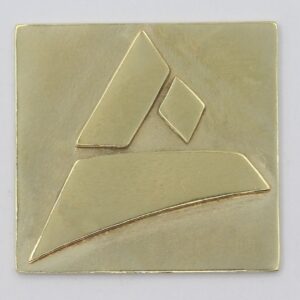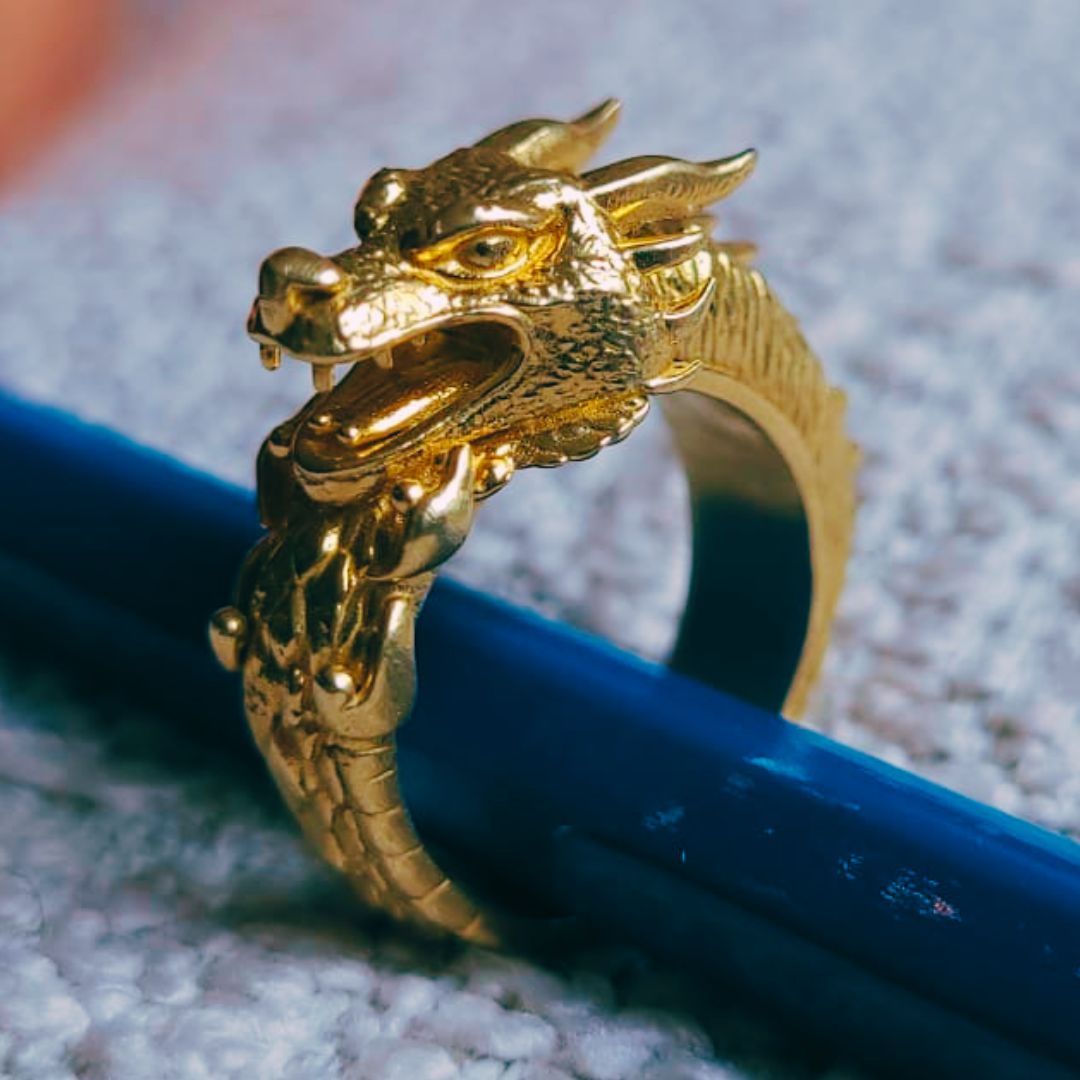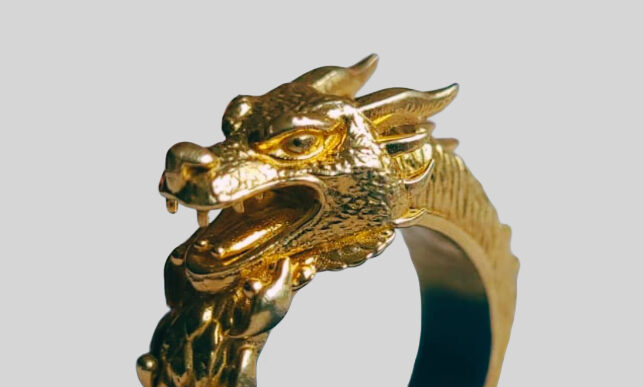Brass is an alloy of copper (60-70%) and zinc (30-40%), valued for its warm yellow-gold color and affordability. It’s often used in fashion and costume jewelry casting, as it closely resembles gold’s appearance, at just a fraction of the cost.
At Castimize, we use high-quality brass optimized for detail retention and surface finish in lost wax casting.

Properties of Brass
| Color: | Yellow-gold |
| Hardness: | ~3.0 Mohs (similar to pure copper) |
| Melting Point: | 900–940 °C |
| Tensile Strength: | 300–500 MPa |
| Density: | ~8.4 g/cm³ |
Why Brass Is Ideal for Lost Wax Casting
Brass is one of the most versatile and forgiving metals for casting. Its fluidity allows it to fill intricate mold cavities with ease, supporting designs with thin walls, fine engravings, and embossed details.
Casting Advantages:
- Fills fine details with precision
- Supports intricate engravings and filigree
- Minimal shrinkage during cooling
- Consistent surface quality
- Good balance of strength and ductility
However, brass is prone to oxidation at high temperatures, so proper mold venting and thermal control are essential to avoid porosity and discoloration.
Brass is relatively soft and malleable. On the Mohs scale it’s around 3.0, comparable to pure copper. This means brass pieces are softer than bronze and can scratch or dent with rough wear. However, brass still offers decent durability for everyday jewelry; its flexibility allows intricate cast designs without cracking.




Hardness & Strength
Brass is relatively soft and malleable. On the Mohs scale it’s around 3.0, comparable to pure copper. This means brass pieces are softer than bronze and can scratch or dent with rough wear. However, brass still offers decent durability for everyday jewelry; its flexibility allows intricate cast designs without cracking.
Corrosion & Tarnish
Brass tarnishes over time when exposed to air and moisture, forming an oxide patina that looks brown, black, or green. This is a normal oxidation process. Brass actually has good general corrosion resistance, but the copper in it will oxidize and can even leave a greenish patina (copper carbonate) on the surface. Regular polishing is needed to maintain a bright gold-like shine. Otherwise, an aged brown/green patina will develop – some wearers intentionally let this happen for a vintage look.
Hypoallergenic?
Brass contains no nickel (its components are copper and zinc), so it’s generally free of the most common allergen (nickel). However, copper can react with skin. It’s typical for brass rings or cuffs to leave a green stain on skin due to copper salts forming with sweat and oils. This green discoloration is harmless and not an allergy – it’s a chemical reaction (oxidation), and it washes off easily. True allergies to brass itself are rare, though a few people can have copper sensitivity or a reaction if the brass contains trace metals like lead or nickel. In summary, brass is generally safe to wear but expect some skin coloration in humid conditions or during sweating.
Everyday Use
Cast brass jewelry can last many years, but expect surface wear. Because it’s soft, scratches will accumulate over time. The metal’s malleability means rings or thin parts might bend under pressure. On the plus side, brass’s softness makes it easy to repair or re-polish. Tarnish is the main issue in daily use: without a protective coating, brass will dull or darken relatively quickly. Many brass jewelry pieces are lacquered or gold-plated to prevent this. If left uncoated, plan to periodically clean/polish brass items to keep them shiny.
Design & Casting
Brass has a moderate melting point (~900 °C) and casts very well, filling molds for detailed designs. It’s a forgiving metal for casting – its excellent fluidity allows fine detail capture. Because it’s ductile, intricate filigree or engravings are feasible in brass (it won’t crack easily during casting or finishing). Practical examples: Brass is common in men’s jewelry like chunky rings, pendants, and cufflinks, where its gold-like color shines. It’s also used for bold fashion earrings or statement necklaces. Over time these pieces may develop an antiqued patina (which some designers actually prefer for a rustic look).
Designer Tip 💡
Due to brass’s softness, avoid extremely thin or delicate structures in your design. Use a wall thickness of at least ~0.8–1.0 mm for load-bearing parts (ring bands, prongs, links). Thinner brass sections can be brittle and risk breaking or bending with wear. Also, consider applying a clear protective coating or gold plating to brass casts – this preserves the bright color and prevents direct skin contact, reducing tarnish and green stains. Brass pieces can be polished to a high shine or intentionally patinated for effect; communicate to customers that polishing will be needed to maintain the original look if left uncoated.
Surface Finishes Available at Castimize
We offer multiple finish options to match your aesthetic and functional needs:
Natural Brass:
A raw, soft matte finish achieved by magnetic tumbling only. It highlights the casting result in its purest form.Polished Brass:
Polished by hand or machine for a high-gloss finish that mimics the appearance of gold, enhancing reflections and curves.Nano-Coated Brass:
A transparent protective layer applied to natural or polished brass to slow down tarnishing and maintain appearance during handling and shipping.
Ready to create in Brass? Upload your 3D Design
Custom metal casting in gold, silver & more.
High quality, fair prices, worldwide shipping. 🌍

FAQ
Is brass hypoallergenic?
Not always. While nickel-free, it can contain trace metals like copper or lead. Some skin types may react.
Will my brass piece tarnish?
Yes. Tarnish is normal and can form a brown or green patina. We apply a nano-coating to reduce this.
Can brass be used for functional items?
Yes, for small parts like clasps, buttons, and enclosures, but not for high-stress applications.
Can I cast intricate designs in brass?
Absolutely. Brass is one of the best metals for capturing fine detail in casting.
Explore Materials
- Gold Casting Guide
- Silver Casting Guide
- Brass Casting Guide
- Bronze Casting Guide
- Plated Brass Guide
- Platinum Casting Guide

